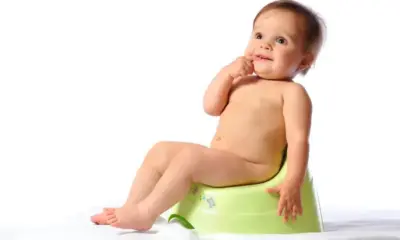Sleep
The Truth About Contact Naps: What They Mean for Your Baby

When your baby sleeps snuggled on your chest, it’s called a contact nap. These moments feel natural, yet many parents wonder about contact naps for babies. From safety concerns to sleep development, understanding these naps helps parents decide when and how to use them. This article explores what contact naps mean, their benefits, risks, and tips to manage them safely.
What Is Contact Napping?
Contact napping means your baby naps while in direct physical contact with you—often on your chest or in your arms. Unlike co-sleeping, the caregiver stays awake during these naps. This closeness comforts babies, mimicking the womb environment and helping them feel secure.
Are Contact Naps Safe?
Contact naps can be safe if done carefully. Pediatricians warn that caregivers must stay awake during contact naps. Falling asleep while holding your baby, especially on soft furniture, can lead to dangerous situations like blocked airways or falls. A study showed many in-hospital baby falls happen when caregivers doze off during feeding or naps. Therefore, always remain alert and avoid contact naps on sofas or chairs.
Benefits of Contact Naps for Babies
Many parents find contact naps helpful, especially for newborns. These naps:
- Encourage bonding through skin-to-skin contact.
- Promote longer and deeper sleep in some babies.
- Help reduce crying and fussiness.
- Support breastfeeding success by keeping baby close.
- Mimic the womb’s comforting environment, supporting the fourth trimester phase.
Sleep experts agree that contact naps encourage babies to feel safe and calm, which helps them sleep more restfully. Also, babies held during naps often fall back asleep more easily when they stir.
Drawbacks of Contact Naps
While contact naps have benefits, they don’t suit every family. Some parents feel “nap trapped,” unable to get chores or rest done. Additionally, babies may become dependent on physical contact to fall asleep. This dependence can make transitioning to independent sleep more challenging. Parents often find that babies used to contact naps take longer to learn to nap alone.
When to Consider Stopping Contact Naps
There’s no strict age to stop contact naps. Experts suggest transitioning around 4 to 6 months may be easier for most babies. However, the decision depends on how you and your baby feel. If contact naps interfere with your routine or sleep goals, gradually reducing them may help.
Tips to Transition Away from Contact Naps
Transitioning away from contact naps takes patience but is achievable. Try these tips:
- Use white noise during naps to mimic womb sounds and soothe baby in the crib.
- Avoid letting baby fall asleep while feeding to build stronger sleep pressure.
- Place baby drowsy but awake in the crib, then gently encourage self-soothing.
- Use Karp’s “5 S’s”: swaddling, side/stomach holding, shushing, swinging, and sucking to calm baby.
- Start practicing independent sleep at bedtime when sleep hormones support rest better.
- If your baby goes to daycare, coordinate sleep routines for consistency.
These strategies help babies feel secure while learning to nap independently.
Real Parent Experiences
Parents share mixed experiences with contact naps. Hannah found her baby napped better on her chest but struggled with crib naps later. Lauren values contact naps but notes her newborn naps shorter on her chest than in other places. Victoria initially felt frustrated by the “nap trap” but now embraces the cuddles, knowing chores can wait.
Final Thoughts on Contact Naps for Babies
Contact naps offer undeniable comfort and bonding. Still, they require balance to avoid sleep dependency and parental exhaustion. By following safety tips and gradually transitioning, you can enjoy the best of both worlds: close moments now and independent sleep later.
Explore more news and helpful parenting tips on this website.




